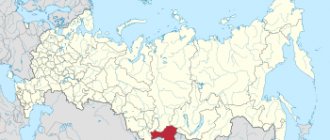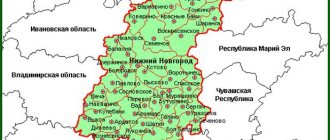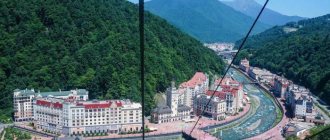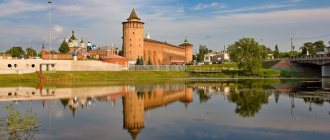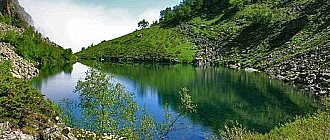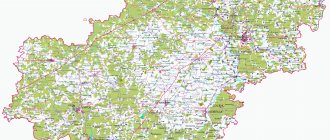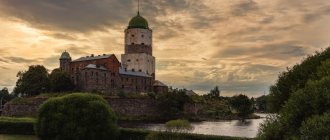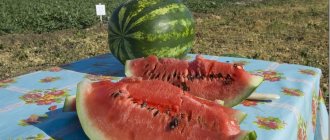What holiday is it today?
December 16, 2021, Thursday
Today are holidays, events: Events that happened on December 16 in the world, in different years Tomorrow: Day of Strategic Missile Forces Day of Employees of the State Courier Service Memorable date in the military history of Russia: Capture of the Ochakov fortress in 1788
Today is the Orthodox holiday of the Prophet Zephaniah. Reverend Savva of Storozhevsky, Zvenigorod. Martyr Angelis... Tomorrow: Great Martyr Barbara and Martyr Juliania of Iliopolis. Venerable John of Damascus...
Today is a national holiday: Day of World Silence and Silence... Tomorrow: Barbarian Day...
[edit] History
On July 16, 1928, the Mordovian Okrug was created as part of the Middle Volga region; on January 10, 1930, it was transformed into the Mordovian Autonomous Region. From December 20, 1934 - Mordovian Autonomous Soviet Socialist Republic, from December 7, 1990 - Mordovian Soviet Socialist Republic, from January 25, 1994 - Republic of Mordovia. The current Constitution of Mordovia was adopted by the Constitutional Assembly of the Republic of Moldova on September 21, 1995. For success in the development of the national economy, science and culture, the Republic of Moldova was awarded 2 Orders of Lenin (1965, 1985), the Order of Friendship of Peoples (1972), and the Order of the October Revolution (1980).
Seasons
Seasons, four periods of the year (spring, summer, autumn and winter) characterized by certain average temperatures. The period during which the Sun passes through one of these sectors is called the season. Spring in the Northern Hemisphere and autumn in the Southern Hemisphere begin when the Sun passes through the initial circle of declination and its right ascension is 0° (vernal equinox). Summer in the Northern Hemisphere and winter in the Southern Hemisphere occur when the sun's right ascension is 90° (summer solstice). Autumn in the Northern Hemisphere and spring in the Southern Hemisphere begin when the sun's right ascension is 180° (autumnal equinox). The beginning of winter in the Northern Hemisphere and summer in the Southern Hemisphere is considered to be the winter solstice, when the direct ascension of the Sun is 270°... Next: Seasons. Russian folk calendar. Monthly words...
Natural attractions
Lake Inerka
Coordinates: 54.063067, 45.887104 How to get there: located 17 km from the village of Bolshie Berezniki
The maximum depth of the lake reaches twelve meters, but its length is about three kilometers. The Sura River flows into it.
On March 6, 1983, the lake acquired the status of a natural monument of republican significance, since it is home to many species of fish and other inhabitants of the underwater world; Waterfowl listed in the Red Book nest along the shores of the lake.
The coniferous and deciduous forests surrounding the lake are rich in mushrooms and berries. This is a good place for hunting and fishing. Auto racing competitions are also held here on the shore every summer.
Mordovian State Reserve
Address: Pushta village, Temnikovsky district Telephone: 8 (8344) 52‑96-35 Website: zapoved-mordovia.ru Opening hours: 08:00 – 17:00 Mon-Fri, Sat, Tue – weekends Cost: free admission How to get there : by bus to the city of Temnikov
The natural site was opened on March 5, 1936. It was established in honor of the zoologist and ecologist P. G. Smidovich. Valuable species of trees and shrubs grow here, as well as endangered populations of animals and birds.
In the summer of 2010, most of the reserve was damaged by a fire that broke out due to abnormal heat. More than 12 thousand hectares of forest were damaged, and many representatives of local flora and fauna were killed.
Folk calendar about every day
Every day one season always replaces another and this determines a person’s way of life. In connection with this, a folk calendar was formed in which there were practically no nameless, unmarked days. Every day was special, had its own purpose. All this was determined by climate conditions and astrological phenomena.
A calendar is a system for counting periods of time. The first calendars arose a long time ago, in ancient times, because there was a need to measure time. The word calendar comes from the Latin words caleo - to proclaim and calendarium - debt book. This is due to the fact that in Ancient Rome the beginning of each month was especially proclaimed, and because it was customary to pay debts on the first day of the month. Different peoples counted time differently. Some calendars are based on the changing phases of the moon - lunar calendars; in others - the change of seasons - sunny; in others, the length of the year was coordinated with the change of seasons, and the counting of months was associated with the phases of the Moon. Such calendars are called lunisolar.
In Rus', the calendar was called a monthly calendar. Every day, the month book covered the entire year of peasant life, “describing” day by day, month after month, where each day had its own holidays or weekdays, customs and superstitions, traditions and rituals, natural signs and phenomena. The cyclical nature of the calendar is reminiscent of human life, where spring is youth, summer is heyday, autumn is the time of harvesting fruits (it’s good if there are some, otherwise you can live your life without collecting fruits), winter is the time of wisdom and peace. This cyclicality and rhythm determined the way of life of the farmer. The folk calendar was an agricultural calendar, which was reflected in the names of the months, folk signs, rituals and customs. Even the determination of the timing and duration of the seasons is associated with real climatic conditions. Hence the discrepancy between the names of the months in different areas... Next: Folk calendar...
Fishing calendar for every day
The fishing calendar should not be taken as an absolutely indisputable truth. Fish biting is greatly influenced by a whole range of natural factors, as well as the influence on the nature of man himself. You must not forget that the fish’s bite depends and is determined not only by the calendar dates and biological cycles of their life, reflected in the calendar, but also, no less, by the state of their habitat; the bite also depends on weather conditions: air and water temperatures, cloudiness, wind direction and strength, etc... Next: Fishing calendar...
Orthodox calendar about every day
Orthodox calendar: Orthodox, Church and Christian holidays.
The church year is an alternation of weekdays and holidays. On weekdays, a person is called to work “by the sweat of his brow to earn his bread.” Holidays are given in order to feel liberation, to rise above the bustle and routine of the world, to feel involved in the highest of worlds, “where there are no illnesses, sorrows and sighs, but endless life.” Since ancient times, holiday cycles have been associated with the seasons. The pagans associated them with the worship of the forces of nature, the cult of which in the Old Testament was replaced by gratitude to the Creator for the universe. And although the connection between holidays and the seasons has not completely lost its power, since God is present in everything, in the plant and animal world, in human works, it nevertheless faded into the background, giving way to a spiritual foundation built on the Sacred Scriptures. The history of Orthodox holidays dates back to the times of the Old Testament. Each of the Orthodox holidays is dedicated to the remembrance of the most important events in the life of Jesus Christ and the Mother of God, as well as the memory of saints... Next: Orthodox calendar...
Russian folk calendar for every day
The word “sign” comes from the word “notice”, i.e. observe. As a result of observing what happens around a person every day, he accumulates life experience. This knowledge was passed down from generation to generation, carefully preserved and people trusted it as a sacred book. Many signs have come to us from the depths of centuries without losing their knowledge. Each of us is free to choose: to dismiss all this as an absurd superstition or to take a closer look at the signs and take the centuries-old experience of generations more seriously. Most of us, when taking exams, ask them to scold them, boasting about some kind of good fortune or luck, spit so as not to jinx them or knock on wood, take a detour if a black cat crossed the road, are afraid of the number 13 and much more. And who among us does not have lucky things, numbers? Who has never resorted to the help of fate at least once in their life, who has not believed in secrets? It’s as if everything connected with signs is hidden somewhere deep in our subconscious. Often we remember them mechanically, unconsciously, or just as a joke. But, undoubtedly, the signs contain a lot of accurate knowledge and practical wisdom of our ancestors. They cover all the characteristic, often difficult to perceive, natural phenomena. Signs have preserved a lot of what was in old folk holidays and customs; they help predict the weather, grow crops... Next: Folk signs...
Transport of the region
A satellite map of the region allows you to track all transport and logistics hubs of the republic over an area of more than 26 thousand square kilometers. The most important railways for the country pass through this territory, connecting the European part with the Urals and the north of the country with the Volga region. Communications are maintained with Kazakhstan, Siberia, Central Asia, and the Far East. The road infrastructure is also actively developed. They have a length of more than 6 thousand km.
Of these, more than 400 are federal highways, more than 4 thousand are republican ones. The map of Russia shows numerous pipelines, such as Urengoy - Pomary - Uzhgorod, Urengoy - Center-1, Urengoy - Center-2, Yamburg - Yelets-1, Yamburg - Yelets-2. They have a length of more than 13 thousand km. The air transport infrastructure is represented by the airport in Saransk.
The railway in Mordovia is 550 km long. The logistics centers are Saransk, Krasny Uzel and Ruzaevka.
Holiday calendar, dates and events of the year
All state and professional holidays in Russia, including significant World and International holidays, and other equally interesting holidays and events about every day.
The holiday has always kept pace with the history of mankind. Social time can be divided into three types: everyday life (weekdays), weekends and holidays. Everyday life is a series of practices repeated day after day and every day (work). Weekends are regular breaks from the rush of everyday life. It is believed that on weekends a person should restore his strength after working days. Day off, non-working day. A holiday is a day of celebration established in honor or in memory of someone or something. A day or series of days celebrated by the church in memory of a religious event or saint... Next: Calendar...
[edit] Administrative-territorial division
The Republic of Mordovia includes one city of republican subordination (Saransk and 22 municipal districts:
- Ardatovsky municipal district, district center - Ardatov;
- Atyuryevsky municipal district, district center - village. Atyurevo;
- Atyashevsky municipal district, district center - village. Atyashevo;
- Bolshebereznikovsky municipal district, district center - village. Bolshie Berezniki;
- Bolsheignatovsky municipal district, district center - village. Bolshoye Ignatovo;
- Dubyonsky municipal district, district center - village. Dubyonki;
- Elnikovsky municipal district, district center - village. Elniki;
- Zubovo-Polyansky municipal district, district center - village. Zubova Polyana;
- Insar municipal district, district center - the city of Insar;
- Ichalkovsky municipal district, district center - village. Kemlya;
- Kadoshkinsky municipal district, district center - village. Kadoshkino;
- Kovylkino municipal district, district center - Kovylkino;
- Kochkurovsky municipal district, district center - village. Kochkurovo;
- Krasnoslobodsky municipal district, district center - Krasnoslobodsk;
- Lyambirsky municipal district, district center - village. Lambir;
- Romodanovsky municipal district, district center - village. Romodanovo;
- Ruzaevsky municipal district, district center - Ruzaevka;
- Staroshaigovsky municipal district, district center - village. Old Shaigovo;
- Temnikovsky municipal district, district center - Temnikov;
- Tengushevsky municipal district, district center - village. Tengushevo;
- Torbeevsky municipal district, district center - village. Torbeevo;
- Chamzinsky municipal district, district center - village. Chamzinka.
Prayer book, Orthodox prayers for every day
Prayer is the most powerful means for healing all illnesses - both physical and mental. Prayers can be laudatory or grateful, petitionary and repentant. If we have offended God, sinned, we must ask Him for forgiveness, that is, repent. Such prayers are called repentant prayers. If everything is fine with us, if we and our loved ones are healthy and prosperous, if we have a place to live, something to wear, something to eat, we must glorify and thank God for this. Such prayers are called praise or thanksgiving. If some misfortune, illness, trouble or need happens, you need to ask God for help. Such prayers are called petitionary... Next: Orthodox prayers...
Zodiac, astrological, eastern calendar. Zodiac signs
In ancient times, to establish the calendar, priests used knowledge of the positions of all the planets. Before the reform of Peter 1, the New Year was celebrated on the Day of the Autumn Equinox. On this day, according to ancient legend, the most peaceful treaty was concluded between the Great Race (ancient Slavs) and the Great Dragon (ancient Chinese) and it was approximately 7518 years ago... For the ancient Slavs, the calendar month corresponded to the lunar cycle from new moon to new moon, taking into account such Thus, the relationship of the entire annual cycle with astronomical and natural phenomena. There was no coherent calendar system. The main natural phenomena are still considered to this day to be the days of the solar equinox and solstice - the Slavic holidays Maslenitsa, Kupala, Ovsen and Kolyada. But during the time of Peter 1, all ancient Slavic calendars were abolished and a new Western European calendar from the Nativity of Christ (Julian calendar) was introduced, while the beginning of the calendar was moved to January 1. The Julian calendar (old style) did not take leap days into account and accumulated one extra day every 128 years. After the October Revolution in 1918, the Gregorian calendar (new style) was introduced in Russia, according to which an amendment of 13 days was introduced. The calendar of the ancient Slavs was based on two planets: the Sun and the Moon. And now they don’t use anything at all. The calendar has become static. There is no such thing as the calendar, it turns out, resting on some planet. Nobody even knows about it. There are just some standard numbers, there are months and holidays. The calendar is based on the Sun and Moon. Why is this so? Because these two luminaries influence the Earth. The Earth revolves around the Sun, and the Moon revolves around the Earth. And these two luminaries create the atmosphere on the planet. From here the calendar is built... Next: Astrological calendar...
[edit] Ethnic structure
Mordovians (Moksha, Erzya), Russians, Tatars, Ukrainians, Belarusians and representatives of other nationalities live on the territory of Mordovia. Until the end of the 1930s. ethnic dynamics on the territory of Mordovia were characterized by an increase in the number and proportion of the Mordovian population, which was facilitated by the formation of Mordovian autonomy. In 1939-1959 the number of Mordovians decreased by 12%, which was due to the development of migration and assimilation processes.
In 1897, the population was 1,063.1 thousand people. (including Russians - 722.9 thousand, Mordovians - 290.2 thousand, Tatars - 48.5 thousand, others - 1.6 thousand), in 1926 - 1,269.4 thousand people. (including Russians - 811.8 thousand, Mordovians - 382.4 thousand, Tatars - 56.8 thousand, others - 18.4 thousand), in 1939 - 1,188 thousand (including Russians - 719.1 thousand, Mordovians - 405.0 thousand, Tatars - 47.4 thousand, others - 16.5 thousand), in 1959 - 1,002.0 thousand (including Russians - 592.4 thousand, Mordovians - 358.0 thousand, Tatars - 38.6 thousand, others - 14.8 thousand), in 1970 - 1029.6 thousand (including Russians - 606.8 thousand, Mordovians - 364.7 thousand, Tatars - 45.0 thousand, others - 13.1 thousand), in 1979 - 989.5 thousand (including Russians - 591.2 thousand, Mordovians - 338.9 thousand, Tatars - 45.8 thousand, others - 13.6 thousand), in 1989 - 963.5 thousand people. (including Russians - 586.1 thousand, Mordovians - 313.4 thousand, Tatars - 47.3 thousand, others - 16.7 thousand people).
Dream books online, interpretation of dreams
A dream book is nothing more than an interpreter of dreams and dreams, a translator of dreams. Since ancient times, people have been using dream books; dreams have always been given great importance, and people have often noticed the prophetic properties of some dreams. The dream book can become your faithful assistant every day and throughout your life, thanks to the dream interpreter you can always make the right decisions, the dream book will help you resist temptations in time, and will warn you against wrong steps and frivolous actions. Further…
